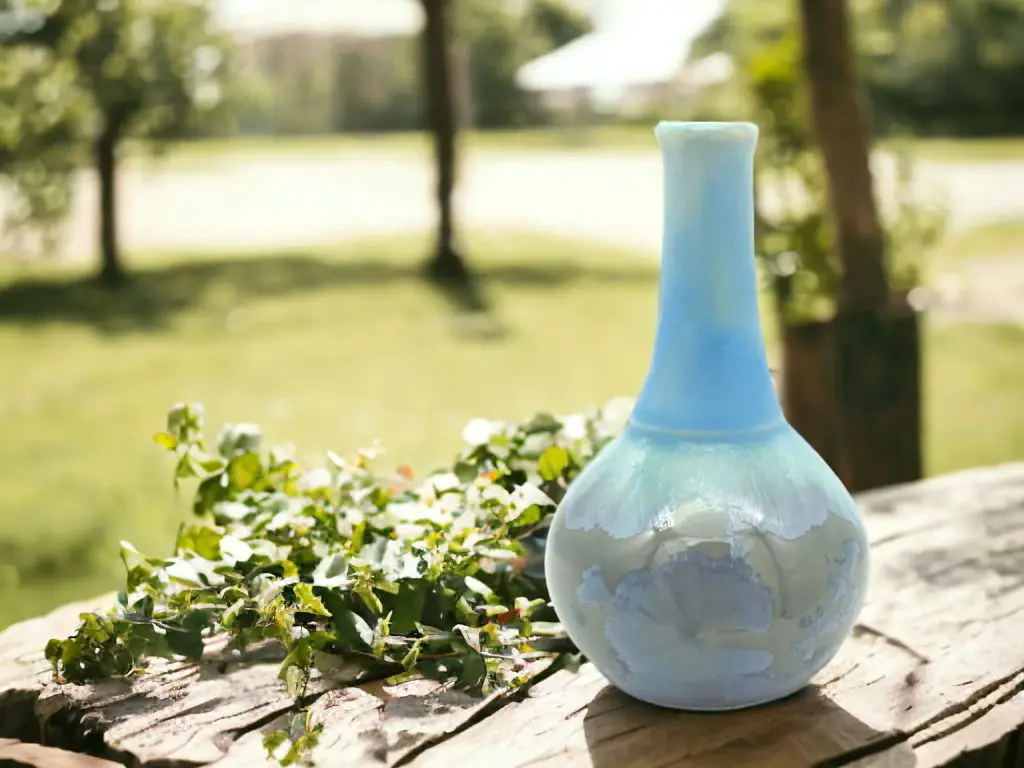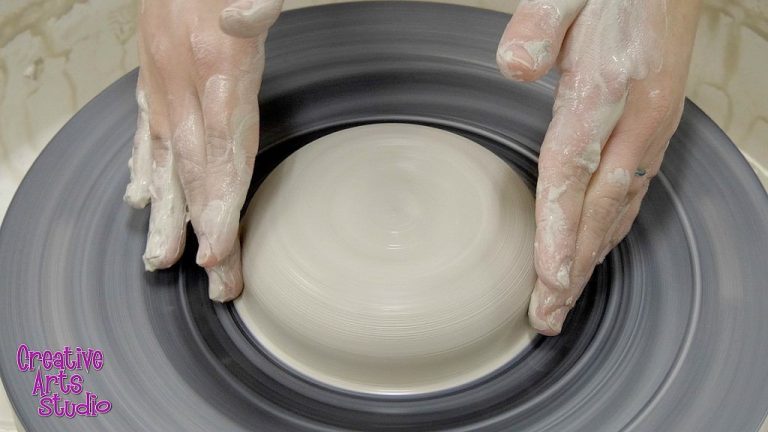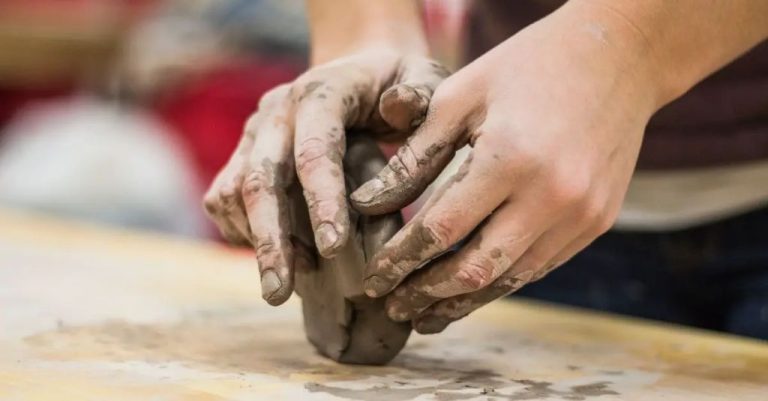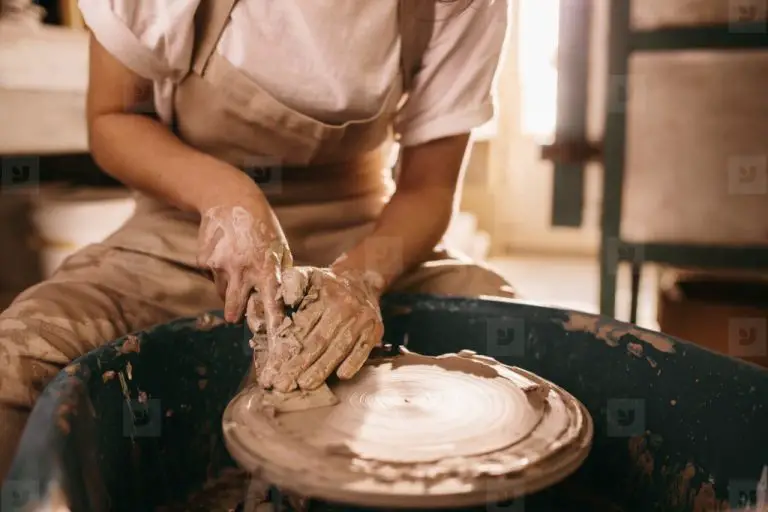What Temperature Is Crystalline Glaze?
What is Crystalline Glaze?
Crystalline glaze refers to a type of pottery glaze that forms visible crystals on its surface during the firing process. According to Merriam-Webster, crystalline glaze is defined as “a pottery glaze that on cooling permits the formation of crystals.”
The use of crystalline glazes dates back centuries, with early examples found in Chinese porcelain and Islamic pottery. However, crystalline glazes became more widely explored and utilized in American studio pottery beginning in the mid-20th century. Artists like Gertrude and Otto Natzler pioneered new crystalline glaze recipes and effects.
Crystalline glazed pottery is prized for its shimmering, jewel-like visual quality. The abstract patterns and textures formed by the crystals create unique decorative effects. Crystalline glazes are frequently used on vases, bowls, mugs, and other decorative ware. They can showcase dramatic crackle-like textures or be polished to a smooth, glassy finish that highlights the glinting crystals.
How Crystalline Glazes Work

Crystalline glazes contain high levels of fluxes like potassium and sodium from materials like frits, along with metal oxides like zinc, titanium, and zirconium that act as crystal-forming catalysts (Digitalfire). During the firing process, these ingredients melt into a fluid glaze and the metal oxides begin to crystallize out of the glaze melt, forming delicate crystal structures throughout the glaze surface.
Several factors affect the crystallization process and resulting crystal formation. Higher levels of flux ingredients create a more fluid glaze melt which allows crystals to form more freely. The specific metal oxides used, firing temperature, and cooling rate also impact crystal size, shape, and density (Matthorne Pottery). Fast firing and cooling tends to create smaller, more evenly dispersed crystals, while slower firing and cooling produces larger, dendritic crystal growth.
Balancing these compositional and firing factors allows ceramic artists to achieve the unique crystalline effects they desire, from subtle crystalline blushes to prominent crystal lattices covering the glaze surface.
Desired Crystalline Effects
Crystalline glazes can produce a variety of beautiful crystalline formations and patterns. Some of the most common desired effects include:
Dendritic crystals – These tree-like crystalline structures form as the glaze cools. They resemble plants, trees, or coral. Dendritic formations are very popular.
Snowflake crystals – These form as interlocking plates and have a geometric, snowflake-like appearance. The crystals emerge on the glaze surface as it cools.
Crawling crystals – These form in lines or clusters as the glaze viscously flows during cooling. The effect resembles cracks or crawling icicles.
Peacock feathers – Curving dendritic crystals can create swirling patterns reminiscent of a peacock’s tail feathers.
To achieve different crystalline effects, potters adjust factors like the glaze recipe, number of frits, firing temperature, and cooling rate. A faster cool enhances dendritic formation while a slower cool can yield larger snowflake plates. The options are nearly endless for crystalline artists.
Recommended Firing Temperatures
The temperature range at which zinc silicate crystals will grow in a glaze is said by some sources to be from 1180° to 1010° C (or about 2160° to 1850° F) according to this source. However, the most common firing range for achieving nice crystalline effects tends to be between cone 5 and cone 6, which corresponds to temperatures between 2165°F – 2232°F (1185°C – 1222°C).
To produce larger crystals, fire on the lower end of this temperature range, between cone 5 and cone 6. Temperatures between 2190°F – 2210°F (1200°C – 1205°C) will produce crystals in the 50-100 micron range. For smaller, more refined crystals aim for higher temperatures between cone 6 and cone 7, around 2210°F – 2232°F (1205°C – 1222°C). This will produce crystals in the 10-50 micron range (source).
It’s important to ramp up slowly at the end, around 325°F (180°C) per hour. A soak time of 1-3 hours in the peak temperature range will allow crystals to fully mature. Firing too hot or too fast can prevent crystal growth or cause excessive crystallization that destroys the glaze surface.
Using Crystalline Glazes
Crystalline glazes require some special techniques to apply properly and achieve the desired crystalline effects. According to Matthorne Pottery (1), crystalline glazes should be applied in multiple thin coats rather than one thick coat. Applying 2-4 thin coats allows the crystals to form more evenly across the surface. The glaze can be applied by dipping, pouring, or brushing, but dipping may provide the most even application.
Crystalline glazes are compatible with most clay bodies, but smooth clay bodies like porcelain yield the best results (2). The glaze flows more evenly over smooth clay, allowing the crystalline structure to form uniformly. Porous clay bodies can create an uneven glaze surface that disrupts crystal formation. Multiple thin coats help compensate for more absorbent clay bodies.
Proper application technique is key to achieving the unique crystalline effects. With 2-4 thin, even coats over smooth clay, crystalline glazes exhibit their signature crystal growth and iridescent colors.
Achieving Specific Looks
There are a few techniques potters can use to achieve specific crystalline effects in their glazes. The main factors that impact crystal formation are firing temperature, glaze chemistry, glaze thickness, and firing atmosphere.
To achieve long, spikey lithium crystals, aim for thick applications of lithium-rich glazes fired between cone 6 and cone 10 in oxidation or reduction. Cone 6 temperatures tend to produce finer crystalline structures. As the temperature increases towards cone 10, larger and more pronounced crystals will form (Source).
For dense, snowflake-like crystals, zinc-based glazes fired to cone 6 in oxidation can produce beautiful patterns. The zinc content helps facilitate crystal growth as the glaze melts and refreezes during cooling. Thicker glaze applications also promote increased crystallization.
To troubleshoot specific crystallization issues, first examine the firing schedule. Firing too fast through critical hot and cold zones can inhibit crystal formation. Try extending holds at peak temperature as well as during cooling to allow crystals time to nucleate and grow. Also check glaze chemistry and thickness – minor adjustments may help achieve the desired crystalline effects.
Common Problems
Crystalline glazes can be tricky to perfect. Here are some of the most common issues that arise:
Glaze defects like crawling, pitting, and pinholing can occur if the glaze is applied too thickly or if it is incompatible with the clay body. These defects are caused by gases being trapped and attempting to escape the glaze surface during firing. Applying thinner layers and testing glaze and clay compatibility is important.
Crystallization may fail to occur if the glaze matures too early or too late. The glaze needs to melt completely and then cool slowly for crystals to form. Using the recommended firing schedule and making small adjustments to fit specific glazes and kilns is key. Overfiring can cause overly large crystals or a burned appearance.
Food safety is a concern with some crystalline glazes. High levels of zinc, barium, and other materials can leach into food and drink. It’s important to test glazes and only use food-safe recipes on functional ware. Lead glazes should never be used on surfaces touching food.
Proper studio ventilation, masks, and protective equipment should be used when working with crystalline glazes. The fine particles can be respiratory irritants. Glazes should be handled wet and cleaned up promptly to minimize exposure.
Noteworthy Crystalline Artists
Crystalline glazes have captivated ceramic artists for over a century. Here are some of the most influential crystalline artists and examples of their striking work:
Bill Powell is considered a pioneer of modern crystalline glazing techniques. His technical mastery and innovative glaze recipes produce incredible crystal formations like his Grotto Series pieces covered in coral-like crystalline structures (https://www.marianwilliamspottery.com/2014/09/11/bill-powell-rock-star-crystalline-glazes/).
Peter Smith’s background in geology informs his beautifully complex crystalline surfaces. His Crystalline Landscape Series captures the feel of aerial views of glaciers and rock formations (https://www.marianwilliamspottery.com/2014/09/11/bill-powell-rock-star-crystalline-glazes/).
Akio Takamori sculpts figurative works with crystalline effects. His piece Woman in Bath features elegant blue crystals blooming across the surface of the skin.
Other influential crystalline artists include Harold Griffin, Jun Kaneko, Yeesookyung, Arlene Shechet, and Peter Beard.
Crystalline Glaze Recipes
Crystalline glazes require careful formulation to achieve the desired crystalline effects and textures. Here are some beginner and advanced recipes to get started:
Beginner Recipes
This simple cone 6 crystalline glaze recipe from Digitalfire contains just 3 ingredients and yields a crackled glossy surface with bronze crystalline formations:
Zinc oxide: 25
Silica: 25
Epk Kaolin: 50
Another easy low fire option is this cone 04 recipe from Ceramic Arts Network using frit, zinc oxide, and kaolin:
Frit 3124: 30
Zinc oxide: 35
EPK Kaolin: 35
Advanced Recipes
For more dramatic crystalline effects at mid-range temperatures, this cone 6 recipe calls for multiple zinc sources:
Gerstley Borate: 26
Zinc oxide: 15
Silica: 31
EPK Kaolin: 28
At high fire temperatures, this cone 10 crystalline glaze recipe from Ceramic Arts Network develops striking crystal formations:
Silica: 25
Zinc oxide: 25
Dolomite: 25
Whiting: 25
Be sure to test variations of these recipes to achieve your desired crystalline effects.
The Future of Crystalline Glazes
Crystalline glazes continue to evolve and develop as ceramic artists innovate new recipes and techniques. Some recent innovations include low-fire crystalline glazes that can achieve stunning crystal growth at cone 06 temperatures, allowing more accessibility to the crystalline process (Source). The use of copper oxide is also gaining popularity for its ability to produce vibrant blue sapphire-like crystals.
Crystalline glazed pottery has seen a surge in popularity and demand in recent years. The mesmerizing crystals and dazzling effects have captured the fascination of collectors and interior designers. Social media has also helped showcase crystalline artists and spread awareness of this unique ceramic art form. As more artists experiment with crystalline glazes, new trends and styles will likely emerge. The future looks bright for continuing innovation and creativity within the world of crystalline glazed ceramics.



